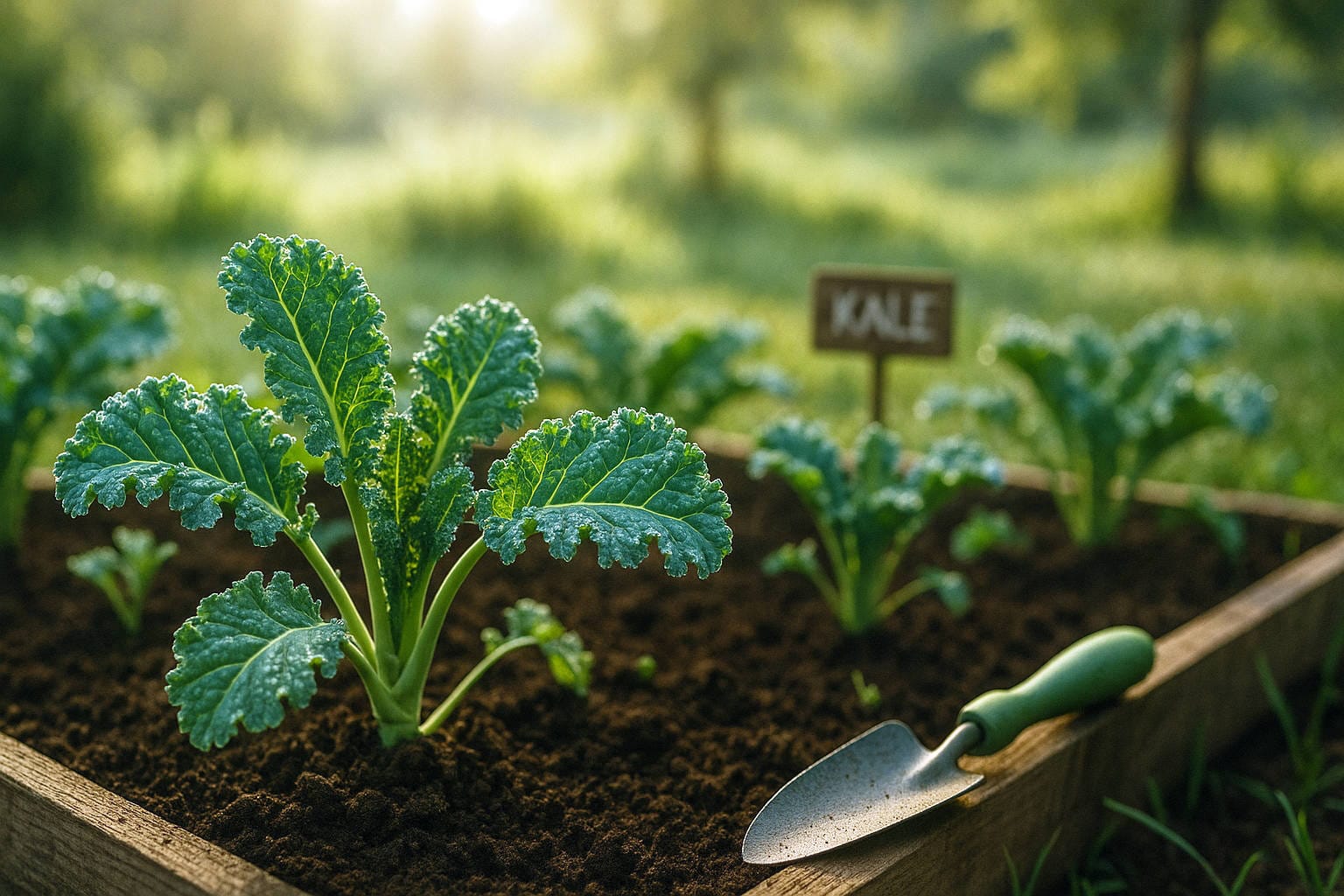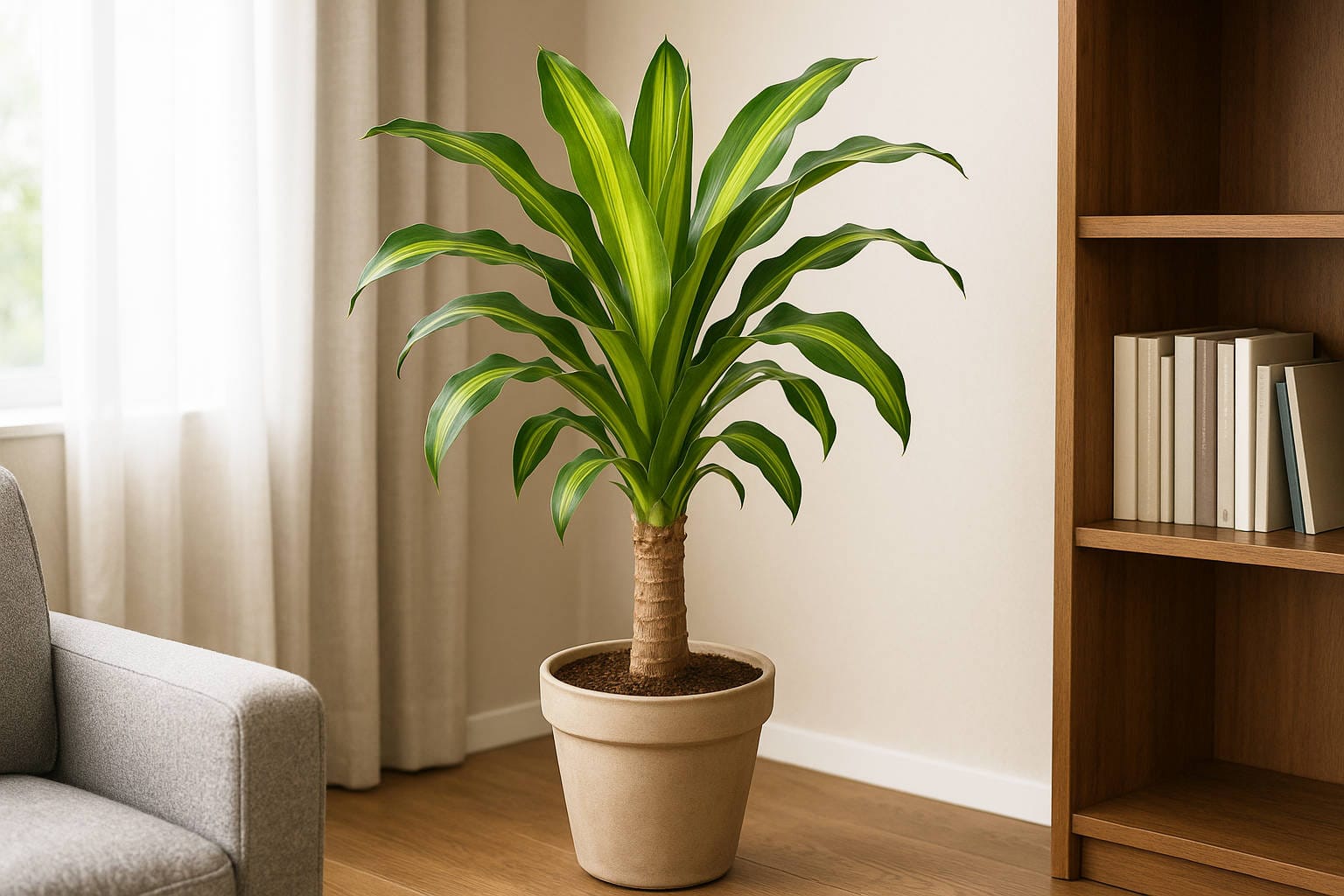Thinking about growing your own garden sage? Good call. This herb is super easy to care for, looks great in any garden, and comes with a bunch of benefits.
So, if you’re into homegrown herbs, learning how to grow garden sage is the starting point.
In this guide, we’re breaking down everything you need to know. You’ll learn the best way to plant sage (seeds or cuttings?), how to give it the right amount of sun and water, and what to do if your sage gets too woody or starts acting up.
We’ll also chat about pruning tricks, harvesting for max flavor, and even keeping it going through winter.
Stick around—by the end, you’ll know exactly how to grow sage that’s strong, healthy, and ready to spice up your meals.
What Is Garden Sage?
Garden sage, also known by its botanical name Salvia officinalis, is a tough little perennial herb that’s been around forever—and for good reason.
It’s part of the mint family (yep, the same gang as basil and rosemary), and it’s famous for its slightly peppery, earthy flavor. If you’ve ever had a holiday stuffing that made you go “whoa, that tastes like fall,” it probably had sage in it.
Now, when we talk about how to grow garden sage, we’re usually referring to common sage. But there are a few other varieties you might run into:
- Purple Sage – same flavor, deeper color, great for garden aesthetics.
- Golden Sage – variegated leaves, adds some flash to your herb bed.
- Tricolor Sage – pink, white, and green leaves. Less common, but pretty cool.
- Berggarten Sage – extra wide leaves and super compact.
This herb isn’t just for cooking, either. It’s been used for ages in traditional remedies (think sore throats and digestion) and even for ornamental purposes because of its soft, silvery leaves.
Plus, it flowers in late spring or summer, attracting bees and other pollinators—bonus for your whole garden.
Garden sage is a perennial herb, which means once it’s happy in your garden, it can stick around for years with the right care.
That’s part of what makes it such a favorite for people getting into growing herbs at home—less fuss, more reward.
You may also like:
- How to Make Orchids Bloom: A Complete Guide for Home Gardeners
- Grow Milkweed in Pots or Gardens: A Complete Care Guide
Ideal Growing Conditions for Garden Sage
Alright, if you want to master how to grow garden sage, the first thing to get right is the environment. Sage isn’t one of those needy plants, but it definitely has its preferences.
First up: sunlight. Sage loves the sun—like, seriously loves it. Aim for at least 6 to 8 hours of direct sunlight a day.
If you’re growing it indoors, park it by the brightest window you’ve got or use a grow light to keep it happy.
Next is soil. Sage isn’t picky about luxury soil, but it does demand well-draining soil. Sandy or loamy soil is ideal. If the ground stays soggy after a rain, your sage will throw a fit (and probably rot).
Shoot for a neutral to slightly alkaline pH, somewhere between 6.5 and 7.5. You can easily test this with a cheap soil pH kit if you’re not sure.
Now, let’s talk climate. Garden sage grows best in USDA zones 5 to 9, which covers a good chunk of the U.S. and similar climates in parts of Canada, the UK, and Australia.
If you’re dealing with heavy frost or brutal winters, growing sage in a pot that you can move indoors is a smart move.
Quick tip: If you’re container gardening, make sure your pot has good drainage holes. Sage hates wet feet.
When you nail the sun, soil, and drainage, you’re setting yourself up for a strong, healthy sage plant that’ll crank out those flavorful leaves season after season.
You may also like:
- How to Care for Ponytail Palm: The Ultimate Guide for Beginners
- Gladiola Flower Guide: How to Grow and Care for Gladiolus
How to Plant Garden Sage
Now that you know what sage loves, let’s dig into the actual planting part. (Yep, pun intended.)
When it comes to how to grow garden sage, you’ve got two main options: start from seeds or plant young transplants.
Seeds are cheaper but take longer to get going, while buying a starter plant from a nursery is faster if you’re a little impatient (no judgment).
Starting sage from seeds:
- Start seeds indoors about 6 to 8 weeks before the last frost.
- Fill seed trays or small pots with a lightweight seed-starting mix.
- Plant the seeds about ¼ inch deep.
- Keep the soil lightly moist (not soaked!) and warm—around 65°F to 70°F (18°C to 21°C).
- Expect germination in 3 weeks or so. Be patient; sage likes to take its sweet time.
Planting sage outdoors:
- Wait until the danger of frost is gone. Sage hates freezing temps when it’s young.
- Choose a sunny spot with that well-draining soil we talked about.
- Space plants about 18 to 24 inches apart. They need room to spread out and breathe.
- Dig a hole slightly larger than the root ball, place the seedling in, and gently backfill.
If you’re growing sage in containers, choose a pot that’s at least 12 inches across so it doesn’t get cramped.
Companion planting tip: Sage grows like a champ next to rosemary, carrots, and cabbage, but keep it away from cucumbers—they don’t get along too well.
The goal here is simple: get your sage off to a strong start, and it’ll reward you big time later.
You may also like:
- How to Care for Poinsettias: The Ultimate Guide for Healthy Holiday Blooms
- Iris Flower Care 101: How to Grow Stunning Irises in Your Garden
Transplanting Sage Seedlings
Alright, so your sage seedlings are looking strong and healthy—nice work! Now it’s time to move them to their forever home. When you’re learning how to grow garden sage, knowing when and how to transplant is a game-changer.
When to Transplant
You’ll want to wait until the seedlings have at least two sets of true leaves and the outdoor temps are consistently above 50°F (10°C).
Before you yank them from their cozy indoor setup, give them a chance to adjust with a process called hardening off. That just means taking them outside for a few hours a day over a week, slowly getting them used to wind, sun, and real-world conditions.
How to Transplant Without Stressing Your Plants Out
- Pick a sunny day—not a scorcher—to transplant.
- Dig a hole about twice the width of the seedling’s root ball.
- Carefully slide the seedling out of its container. (Tip: squeezing the sides of a plastic pot helps loosen it.)
- Place it in the hole at the same depth it was growing in the pot.
- Gently firm the soil around it and give it a good drink of water.
Pro tip: Add a thin layer of organic mulch around the base (but not touching the stem!) to keep moisture in and weeds out.
Your sage might look a little droopy right after transplanting, but don’t panic. That’s normal. Give it a few days, and it’ll perk right up.
You may also like:
Watering and Feeding Sage Plants
Sage is pretty chill when it comes to maintenance, but you’ve still gotta know how to keep it happy. One of the keys to mastering how to grow garden sage is getting the watering and feeding just right.
Watering Sage the Right Way
Sage doesn’t like soggy feet. It’s way more drought-tolerant than a lot of herbs, so if you’re the kind of person who forgets to water sometimes, sage will forgive you.
- Water when the top inch of soil feels dry to the touch. Stick your finger in—easy test.
- In super hot weather, you might water once or twice a week, but in cooler months, maybe just every 7–10 days.
- Always water at the base of the plant, not the leaves. Wet leaves can invite fungal problems like powdery mildew.
Feeding Your Sage
Sage doesn’t need a lot of fertilizer. In fact, too much can make the plant leggy and weak.
- If you’ve planted it in good soil, you might not need to feed it at all.
- Otherwise, give it a light dose of organic compost in the spring, just as it’s waking up.
- You can also use a balanced, slow-release herb fertilizer, but go easy. Think “snack,” not “full buffet.”
Warning Signs
If your sage’s leaves start yellowing, it might be too much water. If it’s looking pale and sad, it might need a little nutrient boost.
Keeping sage properly watered and lightly fed means you’ll have a sturdy, flavorful plant that can pretty much take care of itself most of the time.
You may also like:
Pruning and Harvesting Sage
Here’s the thing: if you really want to master how to grow garden sage, you can’t just plant it and forget about it. A little pruning and smart harvesting will keep your sage thriving (and tasting amazing).
How to Prune Sage
- Start light pruning once your sage plant hits about 6 to 8 inches tall.
- Use clean, sharp scissors or pruners to snip the tips of the stems. This encourages the plant to branch out and get nice and bushy.
- In early spring, give it a hard prune—cut back about one-third of the old, woody growth. This keeps the plant young and vigorous.
- Avoid cutting into the really old, thick wood at the base. Sage doesn’t bounce back well from that.
Harvesting Sage Leaves
- You can start harvesting individual leaves once the plant is established—usually after a couple of months.
- Snip off leaves as needed, but always leave a good chunk of foliage (at least two-thirds of the plant) so it can keep growing strong.
- Morning is the best time to harvest—essential oils (aka flavor) are at their peak then.
Drying and Storing Sage
If you’ve got more sage than you know what to do with (lucky you), drying is a great option.
- Bundle a few stems together with twine.
- Hang them upside down in a warm, dry spot with good airflow.
- Once fully dry (about a week or two), crumble the leaves and store them in an airtight container.
Fresh, dried, or frozen—sage keeps its flavor beautifully. And trust us, nothing beats tossing your own garden sage into a roast chicken or homemade stuffing.
You may also like:
Common Problems and How to Fix Them
Even though sage is one tough herb, things can still go sideways. Part of knowing how to grow garden sage is spotting problems early and handling them fast.
Pests That Bug Sage
- Aphids: These little green bugs suck the sap right out of your sage. If you see them, blast the plant with a strong spray of water or use insecticidal soap.
- Spider mites: Tiny, red, and super annoying. Look for fine webbing on the leaves. Neem oil usually does the trick.
- Whiteflies: If you spot tiny white bugs flying up when you touch the plant, that’s them. Yellow sticky traps can help manage an infestation.
Diseases You Might See
- Powdery mildew: Looks like someone dusted your plant with flour. It shows up in humid weather. To prevent it, make sure your sage has plenty of airflow. If it appears, prune off affected leaves and treat with a baking soda spray.
- Root rot: Caused by overwatering and poor drainage. If your sage looks droopy and sad despite watering, it could be root rot. Sadly, there’s not much to do once it’s bad—better to start fresh and fix your soil or pot drainage.
Dealing With Woody Sage Plants
Over time, sage can get woody at the base. This just means the older stems get thick and less productive.
To avoid it, do regular spring pruning to encourage fresh, soft growth. If your plant gets too woody, it might be time to propagate a new one from a healthy cutting.
Bottom line? Keep an eye on your plants, don’t drown them, and prune when needed. Sage really doesn’t ask for much if you give it the basics.
You may also like:
Tips for Growing Sage Year-Round
Once you’ve figured out how to grow garden sage, the next level is keeping it going strong all year long.
Good news: it’s totally doable with just a few tweaks depending on your climate.
Overwintering Sage Outdoors
If you live somewhere with mild winters (think USDA zones 5–9), sage can usually survive outside. Here’s how to help it out:
- Mulch around the base with a thick layer of straw or leaves once the temps start dropping. This protects the roots from freezing.
- Cut back dead or damaged branches in late fall, but don’t prune too heavily—wait until early spring for a hard prune.
Bringing Sage Indoors
Got brutal winters? No problem. Just move your sage indoors.
- Pot it up in a container with good drainage (if it’s not already).
- Place it in the brightest window you’ve got, preferably south-facing.
- Keep the indoor temp around 60–70°F (15–21°C).
- Water lightly and make sure the room isn’t too humid—good air circulation is key.
Growing Sage Indoors Year-Round
Even if you don’t have outdoor space, you can grow sage indoors all the time. Just remember:
- Use a pot that’s at least 12 inches wide.
- Give it a grow light if natural light isn’t enough.
- Trim it regularly to encourage new, tender leaves.
Propagating Sage
Want more sage? Snip a healthy 4-inch cutting from a non-flowering stem, dip it in rooting hormone, and plant it in moist potting soil. It usually roots in a few weeks. Boom—free sage plants!
Keeping sage happy year-round means you’ll always have a fresh supply ready for roasting, tea-making, or whatever else you’re cooking up.
You may also like:
Conclusion
So, now you know exactly how to grow garden sage—from planting the first seed to snipping fresh leaves for dinner.
Sage really is one of the easiest and most rewarding herbs you can add to your home garden. Give it sun, good soil, a little water (not too much), and the occasional haircut, and it’ll pay you back with flavor-packed leaves for years.
Ready to expand your gardening skills even more? Check out our complete guide on how to grow and care for roses and keep building the garden of your dreams!
FAQ: Growing Garden Sage
1. Is sage easy to grow?
Yes, sage is super easy to grow. As long as it gets plenty of sunlight, well-draining soil, and you don’t overwater it, sage pretty much takes care of itself.
2. How long does sage take to grow?
Sage seeds usually take about 3 weeks to sprout and around 75 to 90 days to mature enough for harvesting.
3. Can sage survive winter?
In zones 5–9, sage can survive outdoors with a little winter protection. In colder areas, it’s better to bring it inside or grow it in pots year-round.
4. Should I let sage flower?
If you’re mainly growing sage for its leaves, it’s better to pinch off flower buds early. Flowering can make the leaves a little less flavorful.
5. How often should I water sage?
Water sage only when the top inch of soil feels dry. It’s drought-tolerant and prefers slightly dry conditions over constantly wet soil.
6. Can I grow sage indoors?
Definitely! Just make sure it gets at least 6 hours of bright light daily, ideally near a sunny window or under a grow light.




